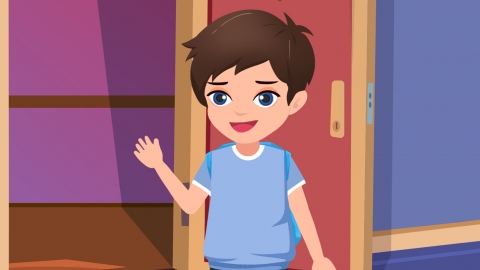What causes a child to have crossed eyes?
Generally speaking, "crossed eyes" refers to esotropia. Childhood esotropia may be caused by factors such as a flat nasal bridge, bad habits, refractive errors, retinal disease, encephalitis, and others. If symptoms occur, prompt medical attention is recommended. Detailed explanations are as follows:

1. Flat Nasal Bridge
During infancy, a child's nasal bridge has not fully developed and tends to be flat, with a relatively wide distance between the eyes. This can make the epicanthal folds more prominent, covering part of the sclera, making the eyes appear inwardly turned, creating a false appearance of esotropia. As the child grows, the nasal bridge gradually develops, and this condition usually improves naturally. No special intervention is required; parents can closely monitor the child's eye development and wait for natural growth.
2. Bad Habits
If a child frequently looks at objects with a tilted head or other不良 habits, it may cause one eye to focus for prolonged periods, leading to alternating eye fixation, known as strabismus. Parents should correct the child's不良 visual habits, encourage proper sitting posture and viewing positions, and avoid excessive eye strain for extended periods.
3. Refractive Errors
Refractive errors mainly result from conditions such as high hyperopia (farsightedness). Abnormal refractive status in a child's eyes leads to excessive accommodation when viewing objects, causing excessive convergence and resulting in esotropia. Symptoms such as decreased vision and blurred vision may also occur. Refractive status can be determined through cycloplegic refraction, and appropriate glasses can be prescribed for correction.
4. Retinal Disease
Retinal disease may be related to genetic factors, systemic diseases, unhealthy lifestyle habits, etc. When retinal abnormalities such as retinal detachment or retinal degeneration occur, visual signal transmission and eye movement control may be affected, leading to esotropia. Symptoms such as visual field defects and eye pain may also accompany. Treatment may include medications like levofloxacin eye drops, calcium dobesilate capsules, and ginkgo biloba extract tablets under a doctor's guidance.
5. Encephalitis
Encephalitis may be caused by factors including low immunity, excessive fatigue, bacterial infection, viral infection, parasitic infection, etc., which may affect the brain's central nervous system and neural pathways, disrupting neural regulation of eye movement and causing esotropia. Headache and vomiting may also occur. Patients may be advised by doctors to use medications such as ceftriaxone sodium for injection, acyclovir for injection, and dexamethasone sodium phosphate injection.
In daily life, parents should pay attention to their child's visual environment, ensuring suitable indoor lighting. Regular eye examinations should be conducted to allow early detection and intervention of eye problems.









